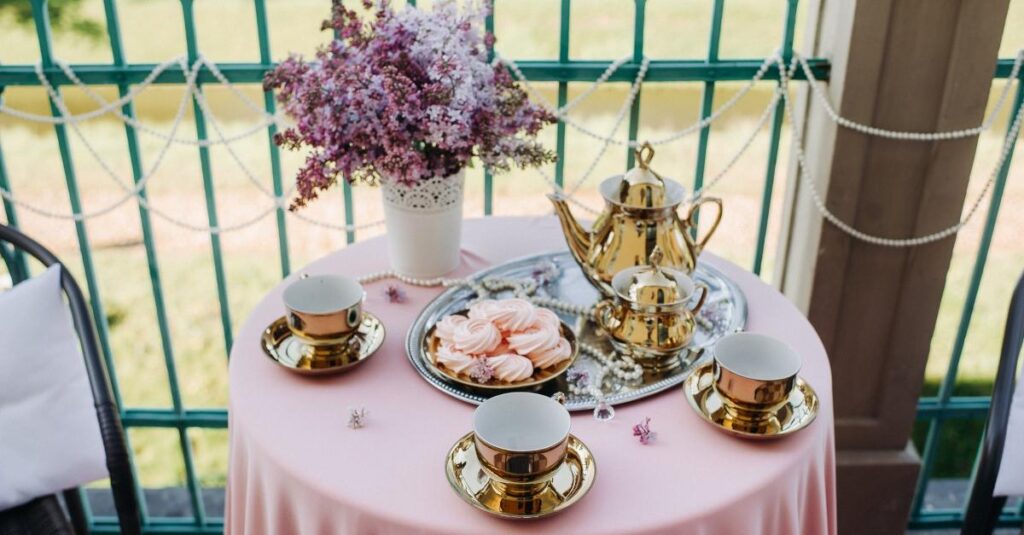When it comes to furnishing our living spaces, we often encounter various furniture options that can enhance the aesthetics and functionality of our homes. Among the numerous pieces, teapoys and tea tables stand out as popular choices, especially for those who enjoy a good cup of tea or coffee while relaxing or entertaining guests. Though they may seem similar at first glance, teapoys and tea tables have distinct characteristics, purposes, and historical significance. In this article, we will explore the differences between teapoys and tea tables, understanding their unique features and how they serve different functions in our homes.
**1. Definition and Design:**
A teapoy is a small, low table with a pedestal base and a round or oval top. It originated in India during the colonial period and was primarily used for serving tea. Teapoys are typically made of wood, though some contemporary designs may incorporate other materials like glass or metal. Their design is simple, elegant, and often ornate, with intricate carvings or inlays that reflect the cultural influences of their place of origin.
On the other hand, a tea table is a larger, more substantial piece of furniture. Tea tables also have various shapes, including round, square, or rectangular, and they often feature a lower shelf or drawer for additional storage. These tables are usually crafted from wood, but like teapoys, modern designs can incorporate different materials to suit different interior styles.
**2. Purpose:**
The primary purpose of a **teapoy** is to serve as a tea-serving table. Historically, teapoys were an essential piece of furniture in homes where tea was a prominent part of daily life. They were used to hold teapots, cups, saucers, sugar bowls, and other tea-related items during tea ceremonies or informal gatherings. Teapoys were not just functional but also served as a symbol of hospitality and refinement.
In contrast, a **tea table** has a broader scope of use. While it can also be used for serving tea or coffee, it is more versatile and can be employed for various purposes. Tea tables are often used as centerpieces in living rooms, providing a convenient spot to place drinks, snacks, books, or decorative items. They serve as functional and decorative elements in the overall interior design, catering to the needs of modern living.
**3. Size and Portability:**
**Teapoys** are typically smaller and more lightweight compared to tea tables. Their compact size makes them easy to move around, which was especially practical during the colonial era when people frequently changed homes. Teapoys were designed to be portable and versatile enough to be used in different rooms or even outdoors.
**Tea tables**, on the other hand, are more substantial and often more stable due to their larger size. While they may not be as easily moved as teapoys, their size allows them to accommodate more items and create a more significant visual impact in the room where they are placed.
**4. Cultural and Historical Significance:**
As mentioned earlier, **teapoys** originated in India during the colonial period. The term “teapoy” is derived from the Hindi word “tipai,” which means a three-legged table. Teapoys were introduced by the British during their rule in India and became popular among the local population as they embraced tea-drinking culture. Over time, teapoys became a symbol of cultural fusion and an important part of Indian furniture heritage.
**Tea tables**, while not tied to any specific culture, have been widely used in various parts of the world, particularly in Europe and North America. They have evolved over time, adapting to different interior design styles and preferences, making them a more global and versatile furniture piece.
In conclusion, both teapoys and tea tables have unique characteristics, histories, and purposes. While teapoys are small, portable tables with cultural significance and a specific tea-serving purpose, tea tables are more substantial, versatile, and widely used for various functions in modern interior design. Whether you prefer the elegance of a teapoy or the versatility of a tea table, these furniture pieces are sure to add charm and functionality to your living spaces. So, the next time you enjoy a cup of tea or coffee, consider the historical and cultural background of the teapoy or admire the practicality and style of the tea table in front of you.






